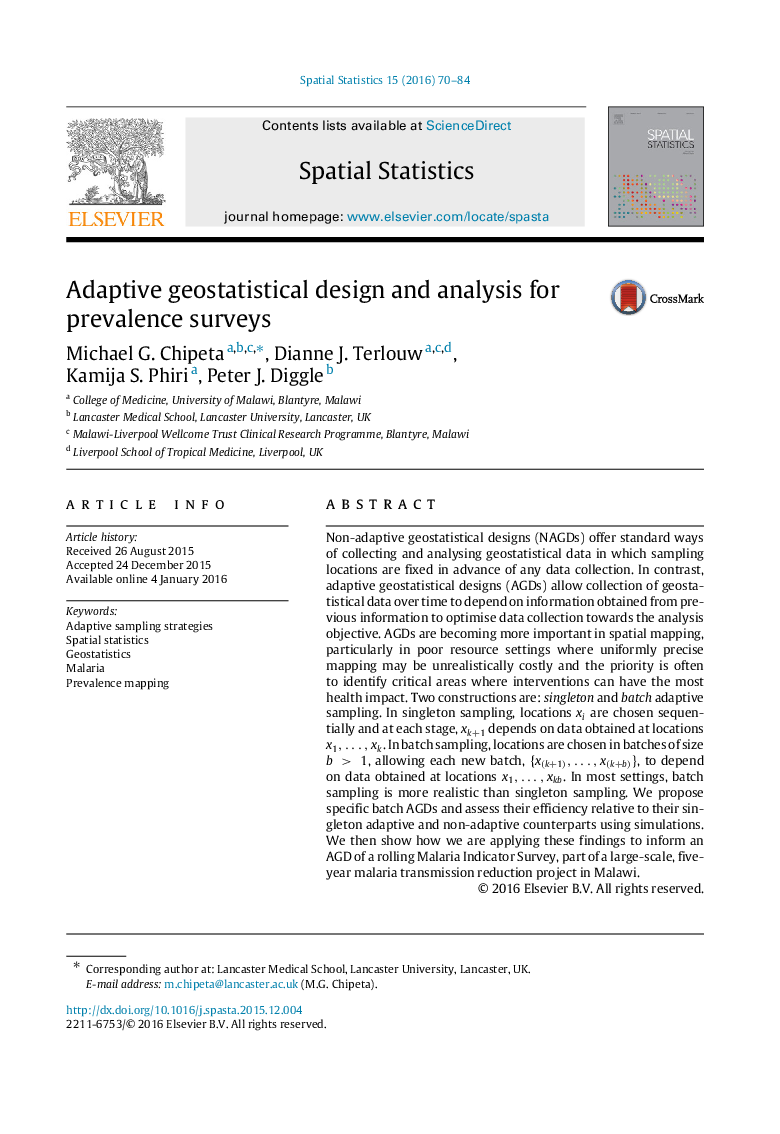| Article ID | Journal | Published Year | Pages | File Type |
|---|---|---|---|---|
| 1064530 | Spatial Statistics | 2016 | 15 Pages |
Non-adaptive geostatistical designs (NAGDs) offer standard ways of collecting and analysing geostatistical data in which sampling locations are fixed in advance of any data collection. In contrast, adaptive geostatistical designs (AGDs) allow collection of geostatistical data over time to depend on information obtained from previous information to optimise data collection towards the analysis objective. AGDs are becoming more important in spatial mapping, particularly in poor resource settings where uniformly precise mapping may be unrealistically costly and the priority is often to identify critical areas where interventions can have the most health impact. Two constructions are: singleton and batch adaptive sampling. In singleton sampling, locations xixi are chosen sequentially and at each stage, xk+1xk+1 depends on data obtained at locations x1,…,xkx1,…,xk. In batch sampling, locations are chosen in batches of size b>1b>1, allowing each new batch, {x(k+1),…,x(k+b)}{x(k+1),…,x(k+b)}, to depend on data obtained at locations x1,…,xkbx1,…,xkb. In most settings, batch sampling is more realistic than singleton sampling. We propose specific batch AGDs and assess their efficiency relative to their singleton adaptive and non-adaptive counterparts using simulations. We then show how we are applying these findings to inform an AGD of a rolling Malaria Indicator Survey, part of a large-scale, five-year malaria transmission reduction project in Malawi.
